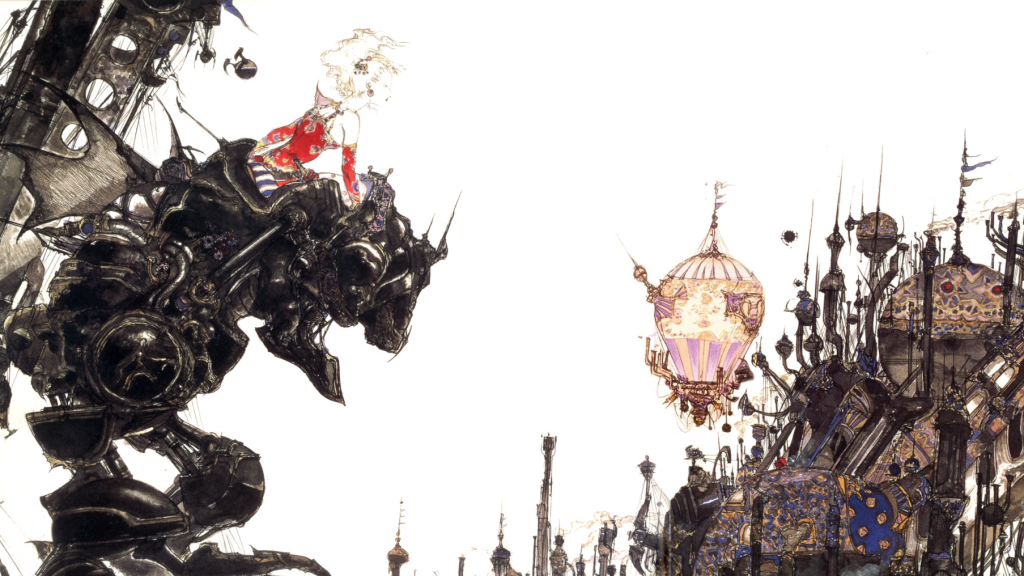Final Fantasy IV – VI Pixel Remaster: A Unified Style for Classic Gaming
The first trilogy of Final Fantasy Pixel Remaster games was fairly simple to analyze and to write about (and I’ve done so here). It was yet another port of the first two titles and a stand-out release of Final Fantasy III, which was clearly the marquee title for both the NES trilogy and the original set of FFPR releases. The three Super Nintendo titles (FF IV through FF VI) have trickled out over the last year, and it is fascinating to see how the development team has attempted to expand and improve upon games that were not in as much dire need of changes – time has been kinder to the Super Nintendo aesthetic, after all. Having the entire set available has once more shifted some of my perceptions about how we might understand these games in relationship to one another.
Most immediately, I think that the Pixel Remaster releases serve to confirm how author and game journalist Chris Kohler thinks of the early days of the franchise: not as a series of three trilogies separated by hardware platform (three on the NES, three on SNES, and three on Playstation) but rather as creating a divide “between FF5 and FF6. Whereas Final Fantasy V feels like an exceptional refinement of the designs and ideas of the first Final Fantasy, FF6 feels like an attempt to separate itself from the old patterns.” (Kohler) Seeing the first six titles presented very similarly strengthens this argument significantly as Final Fantasy VI Pixel Remaster differentiates itself in a variety of ways from its older siblings.
That’s most noticeable in the opera sequence, which is showcased in a 2DHD style (think Octopath Traveler or Triangle Strategy) that none of the other titles use. FFVI doesn’t utilize it particularly well, either, trading the cinematography of the original opera sequence for fancy technology that serves to remove us from the moment rather than bring us inside it. Most noticeable is that Celes no longer disappears behind the pillar when she sings “I’m the darkness…,” but there are a number of small details that add up to a less immersive, less magical opera sequence than the one we were presented in 1994.
Final Fantasy VI is differentiated from the other games in the revised soundtrack as well, when the orchestrations are often unique – wooden flutes and double reeds are prominent here, only rarely deployed in the first five games. While the new orchestration is usually excellent, one change served to drag FFVI down to match its less ambitious peers rather than elevate the game beyond the limitations of the Super Nintendo, and it’s Celes’ crucial character theme – not the opera, but track 22, “Celes’s Theme.”
The flute is used to masterful effect in Final Fantasy III for Aria’s Theme, which now links incredibly well to Reina’s Theme (Lenna’s Theme, in other editions) in Final Fantasy V – both of the ladies just named are associated with the Crystal of Water, and the unified orchestration bridges the generations wonderfully there. For Celes, however, the use of the flute serves not to place her alongside Lenna and Aria, but rather to mute the effects of what used to be (on the SNES original) written for the music box, which created a sense of terrifying nostalgia for the game’s most tragic sequence. “The tune, cloaked in memories of a better past, serves as a bittersweet reminder of how Celes sang. Having lost all hope and voice, this heroine – with nothing left to live for, nothing left to sing or say – surrenders to Kefkaesque despair.” (Cheng)
In other words, making Celes sound like Aria and Reina is missing the point of both the character and of the piece. Everything about the way FFVI is organized musically differentiates Celes from the rest of the cast, and the changes to the soundtrack in the Pixel Remaster largely serve to weaken that dramatic tension.
That complaint aside, there are a whole bunch of good things to say about the use of rock timbres in Final Fantasy IV, V, and VI. Each of the SNES games felt like Uematsu was attempting to inject the JRPG with a healthy dose of progressive rock, and the Pixel Remaster soundtracks pin that aesthetic to the wall. Hearing the entrance of the electric guitar wail during FFV’s “Battle on the Big Bridge” is worth the price of admission alone, as is hearing the pipe organ entrance to “The Decisive Battle” in FFVI.
Here, the standout release might be Final Fantasy V, which has never had an official English release with both high quality music and high quality translation. It does now, and it’s tremendous. Musically, Final Fantasy IV is also without peer here, though some players might miss the HD sprite art of the PSP release, which was designed to look more like a Sega Saturn title than it was a pixel art game. FFIV also loses the most by far in bonus features of any of the six games, as neither the extensive post-game content nor the two sequels are on display for us here in the Pixel Remaster collection.
FFVI is more of a mixed bag. As the game was graphically separate from the original set of five to begin with (a Mode 7 overworld, and an avoidance of 8x8 world map sprites for characters), some of the effects used don’t integrate as well into the new release as they do for the other five games. It remains a marquee title, but this may not be the marquee edition of it. As the game that least-needed an upgrade, I remain unconvinced that this set of changes was as necessary or as welcome as the subtle shifts to the crystal-themed set of five that invite a new generation of players to experience them.
DR. RYAN THOMPSON
Professor of Practice at Michigan State University

